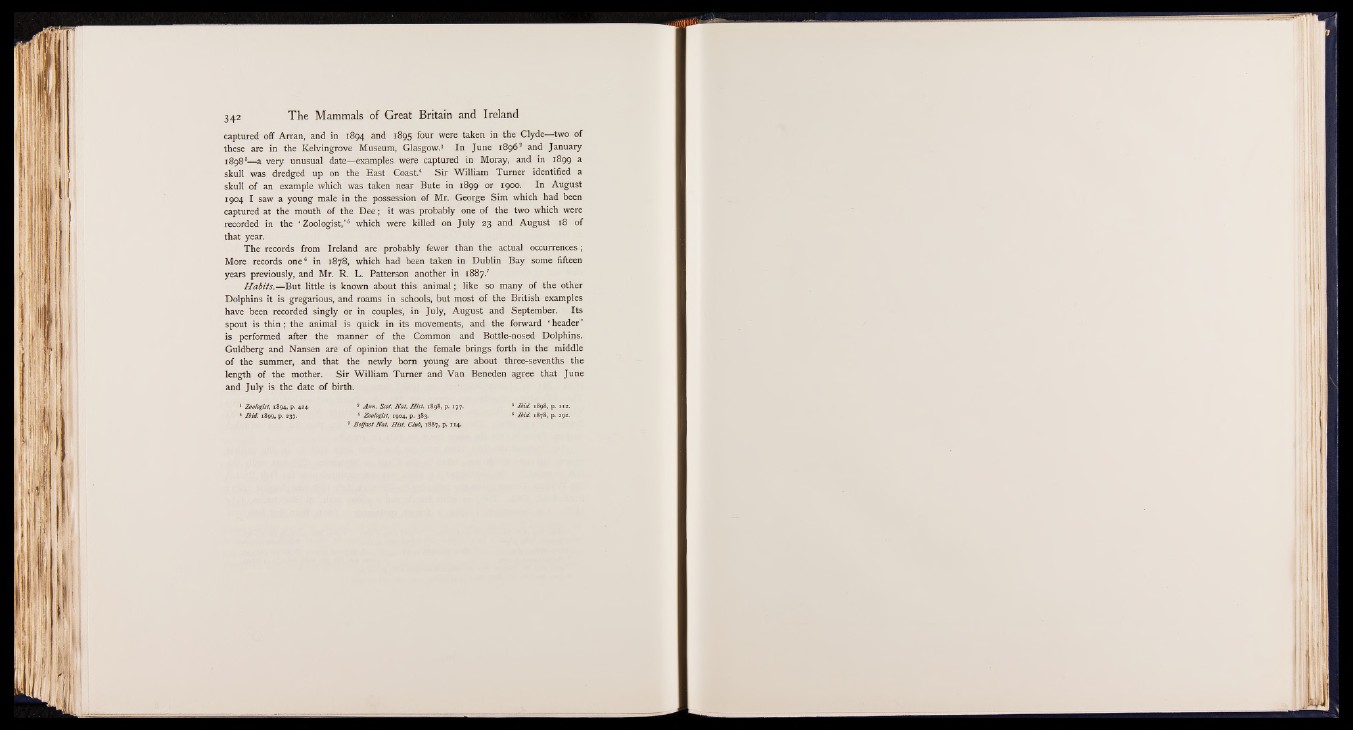
The Mammals of Great 3 4 2 Britain and Ireland
captured off Arran, and in 1894 and 1895 four were taken in the Clyde— two of
these are in the Kelvingrove Museum, Glasgow.1 In June 18962 and January
18988— a very unusual date— examples were captured in Moray, and in 1899 a
skull was dredged up on the East Coast.4 Sir William Turner identified a
skull of an example which was taken near Bute in 1899 or 1900. In August
1904 I saw a young male in the possession of Mr. George Sim which had been
captured at the mouth of the De e; it was probably one of the two which were
recorded in the ‘ Zoologist,’ 6 which were killed on July 23 and August 18 of
that year.
The records from Ireland are probably fewer than the actual occurrences;
More records one6 in 1878, which had been taken in Dublin Bay some fifteen
years previously, and Mr. R. L. Patterson another in 1887.7
Habits.— But little is known about this animal; like so many of the other
Dolphins it is gregarious, and roams in schools, but most of the British examples
have been recorded singly or in couples, in July, August and September. Its
spout is thin; the animal is quick in its movements, and the forward ‘ header ’
is performed after the manner of the Common and Bottle-nosed Dolphins.
Guldberg and Nansen are of opinion that the female brings forth in the middle
of the summer, and that the newly born young are about three-sevenths the
length of the mother. Sir William Turner and Van Beneden agree that June
and July is the date of birth.
1 Zoologist, 1894, p. 424. * Ann. Scot. N at. H ist. 1898, p. 177. 3 Ibid. 1898, p. 112.
4 Ibid. 1899, p. 237. 8 Zoologist, 1904, p. 383. 6 Ibid. 1878, p. 29'S.
7 Belfast Nat. H ist. Club, 1887, p. 114.